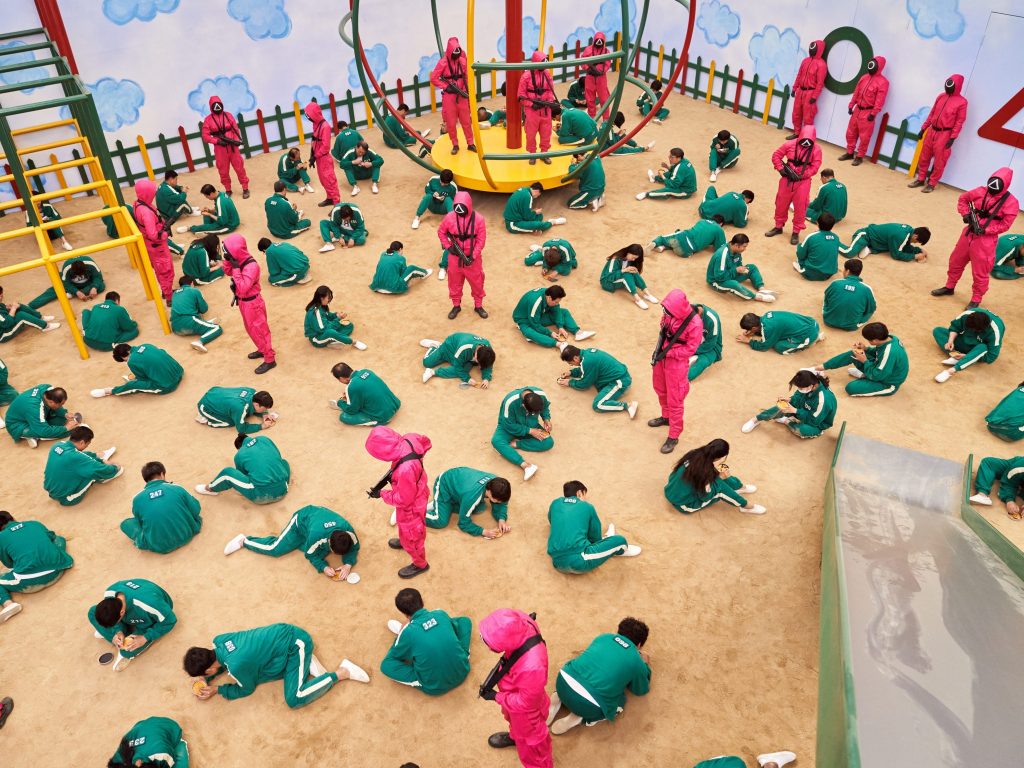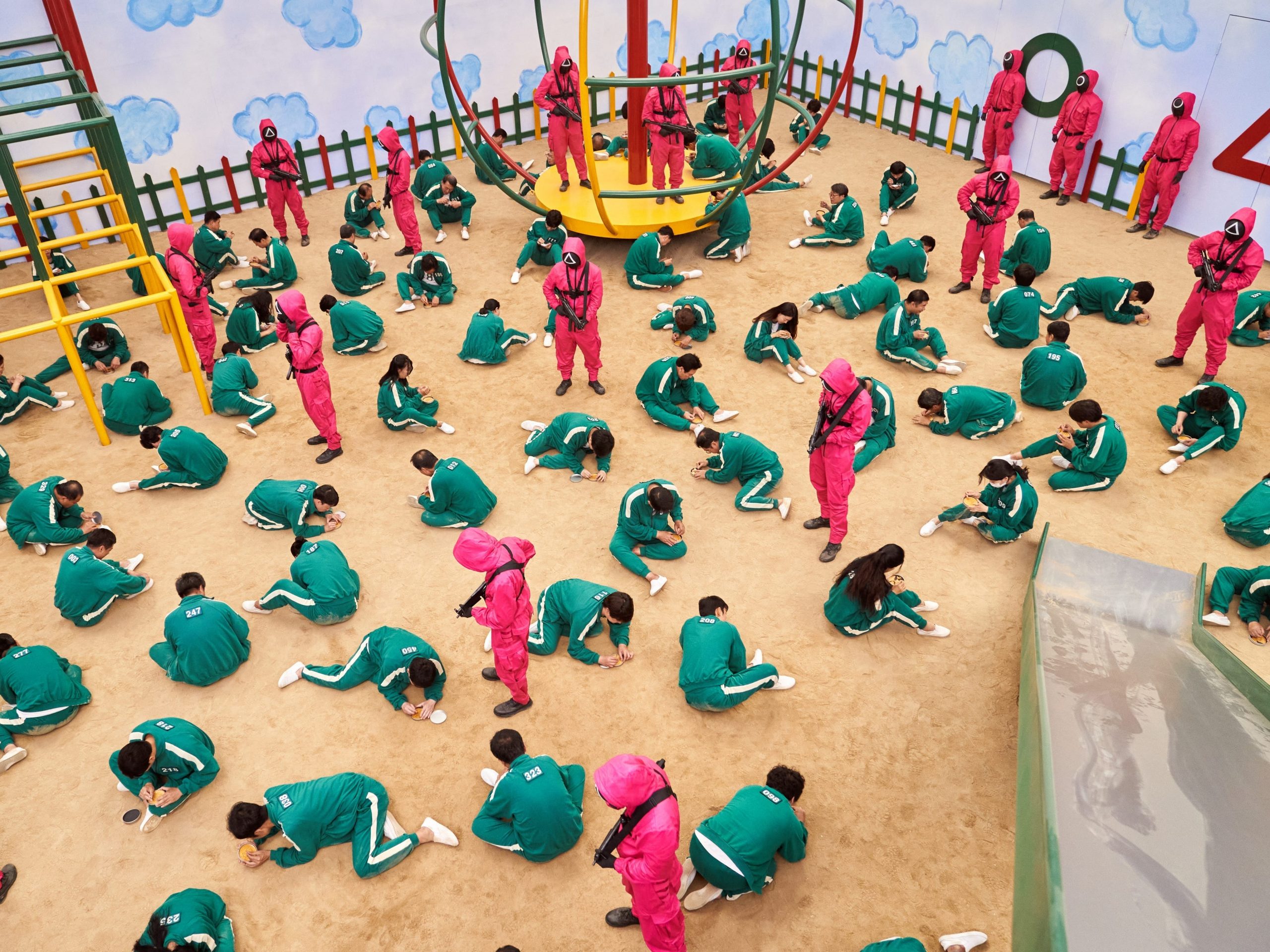
Youngkyu Park / Netflix
"Squid Game" is a dystopian nightmare. But South Korean millennials told Insider that it's actually not that far off from their reality.
When Kim Keunha first moved to Seoul eight years ago, his favorite place in the city was a spot near the Mapo Bridge. Then 19, he was drawn to the iridescent lights of South Korea's capital, a far cry from his hometown of Andong, a city in the southern province of Gyeongsang. Kim, who came to Seoul to try to make it as a tattoo artist, would often take strolls across the bridge – at times homesick, most times cold and hungry.
Eight years on, Mapo Bridge has taken on a very different meaning for Kim. Over the last decade, the bridge has turned into a hotspot for suicides, drawing the desperate and debt-ridden to plunge to their deaths in the waters of the Han River.
For Kim, it has become a reminder of doomed, unfulfilled dreams. His biggest problem now, though, is an eye-watering debt of some $40,000 that he chocked up during his time in Seoul.
"I consider myself lucky that I managed to keep my debt under $50,000," Kim said, showing Insider his latest bank statements. "I'm very aware of how much financial trouble I'm in right now, but there's very little I can do to change my situation."
In 2021, the total amount of debt that South Koreans ran up - more than $1.5 trillion - rivaled the country's GDP of $1.63 trillion.
A 2018 survey from the Korean think tank Seoul Institute found that Koreans owe around $44,000 of debt per household.
That's quite a lot, considering the Korean gross national income (GNI) per capita was just US$33,790 in 2019, according to the World Bank.
Kim's experiences reflect the unforgiving realities of life for some young South Koreans. Stuck in dead-end jobs, with piling debt and no real means of buying a home, it's no wonder that these South Korean millennials think of Netflix's hit drama series "Squid Game" as a grim reflection of their own experiences.
"If someone told me that right now, you could gamble your life to have your debt cleared and become a billionaire, I'd do it without hesitation," Kim said. "Though if I'm being brutally honest, the game masters might think my life probably isn't even worth that much."
Young South Koreans are facing an unprecedented debt crisis that is quickly coming to define their generation
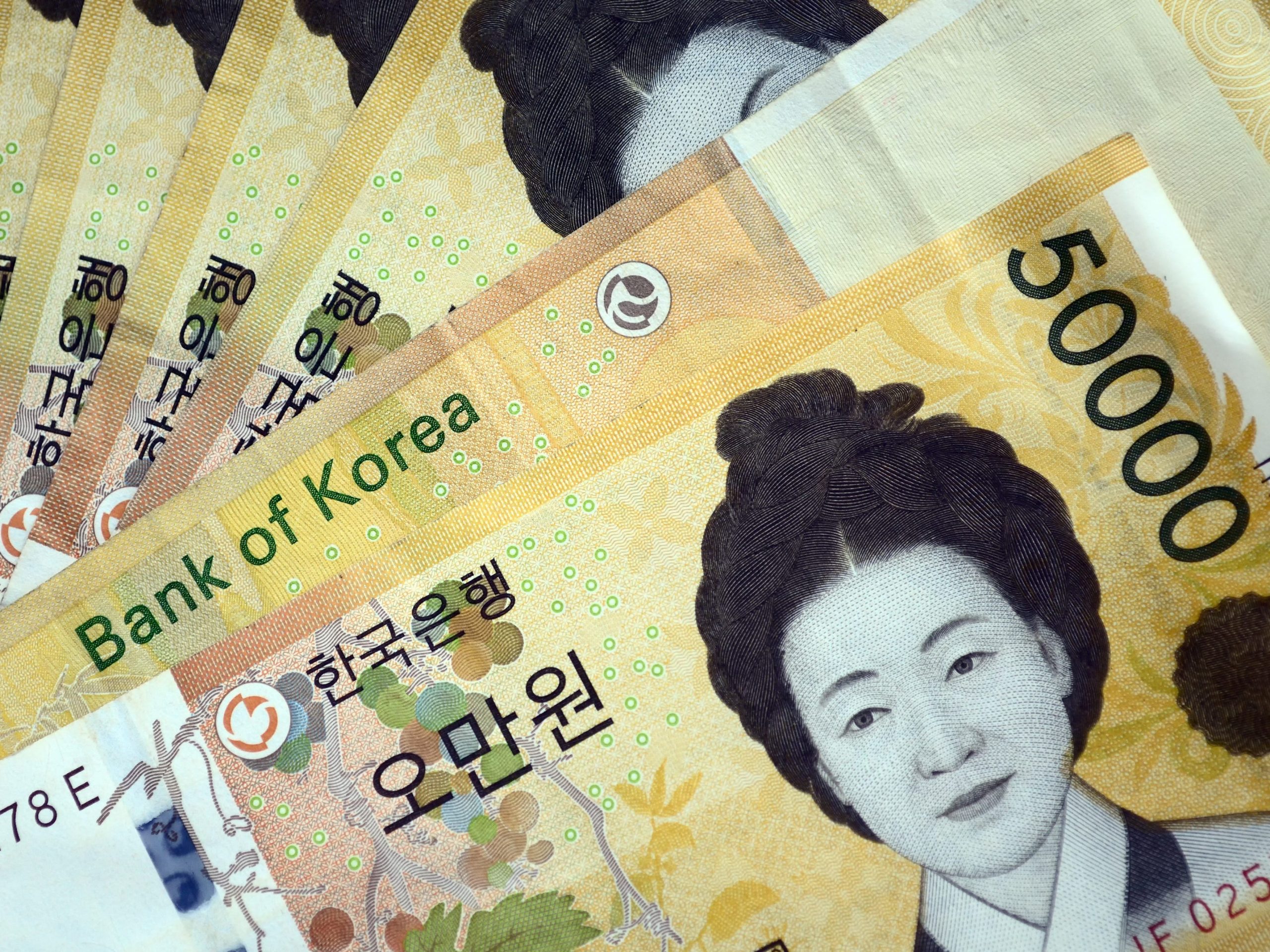
Nora Carol Photography
The Netflix show "Squid Game" tells the tale of a group of 456 down on their luck South Koreans who, facing crushing debt, are tapped to play a series of deadly children's games in an attempt to win a prize of $38 million.
For people like Kim, $38 million is an astronomical sum that he says he would "die for."
Having made little money from being a tattoo artist, Kim cycled through a series of odd jobs over the last five years, taking up employment as a bouncer at a nightclub in the college town of Hongdae, later working extra shifts a waiter in a barbecue joint in Sinchon. Kim now tries to make ends meet by working part-time at a convenience store after being laid off from his restaurant and nightclub jobs during the pandemic.
Kim, who managed to get approved for four credit cards when he was still employed and working two jobs in 2019, is now struggling to pay off the minimum sum on each card every month. His payments vary based on how much he can squeeze out of his paycheck from his convenience store job, but he tries to make a payment of around $280 to $350 per month on each card. However, he relied even more on the credit cards during a long, eight-month stretch of unemployment last year and saw the little progress he made with repayments get wiped out.
It is easy, even for lower-income individuals, to get credit in South Korea. The country saw a credit boom in the wake of the 1997 Asian Financial Crisis when the Korean government gave tax breaks for credit card payments to boost spending. This snowballed over time, making it easy for today's millennials to get trigger-happy with their credit purchases.
In 2019, it was estimated that the average South Korean had around four credit cards, with credit card use accounting for around 70% of private spending that year.
Add to that the development of quick credit schemes, and you have a heady recipe for disaster.
It's possible for people to secure "jobless loans" now through app-based lenders. One man told South Korean daily newspaper Kyunghyang Shinmun he was able to secure around $3,000 in credit within five minutes, with the promise of 0.01% interest rates for a limited time.
"When your paycheck doesn't cover your basic necessities, you don't have an option but to pay for things in advance using a credit card. Sometimes, I still find myself relying on credit cards to pay for food and transportation costs," Kim told Insider.
Middle-class salaried workers are also falling victim to South Korea's debt crisis
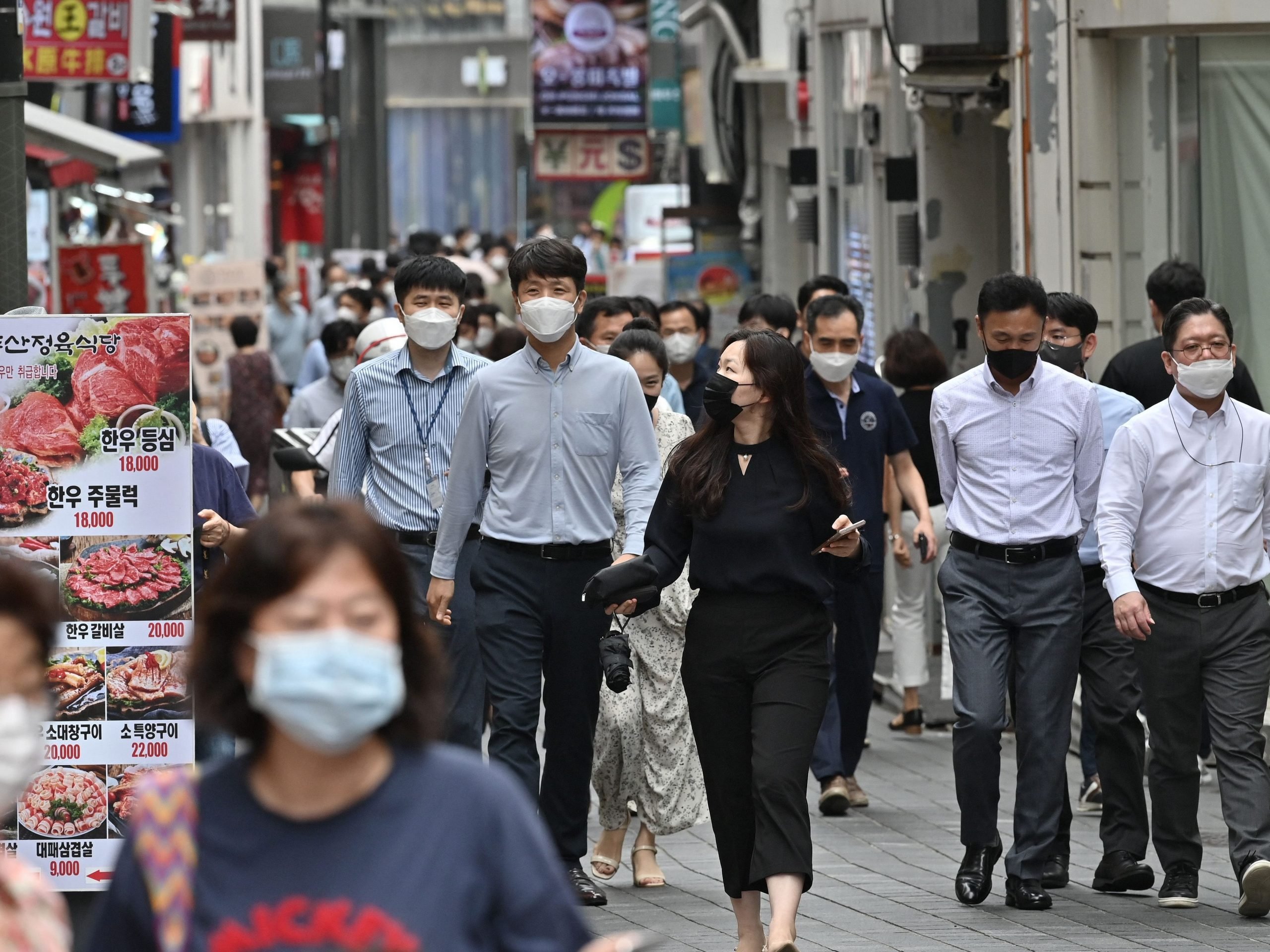
Jung Yeon-je / AFP via Getty Images
This debt crisis isn't only hitting lower-income individuals like Kim, who struggle to find work that pays well enough to finance their loans. The gainfully employed are also struggling to pay down the large amount of debt they've acquired.
Noh Eun-woo, 25, a sales executive at a beauty store in the Edae shopping district in central Seoul, told Insider that she owes just over $12,000 on her credit card bills, which she considers a "low amount."
"I know people who owe $80,000 to $100,000. My close friend maxed out five credit cards," Noh said. She explained that her debt, which started in the "manageable" range of $1,000 to $2,000, began to accumulate in 2020. This is because her earnings, which were pegged to the commissions she made on the sale of makeup products, took a considerable hit when customers scaled back on buying makeup and facial products during the pandemic.
She admitted that she still splurged on the occasional luxury handbag once every three months, but optimistically estimated that it would take her around two to three years to pay off her debts.
"Sales are picking up now, so it isn't so bad. But it is true that I won't have any cash on hand," she said, admitting that she probably had a cushion of between four and six months before she was "close to starving and homeless."
Sam Kyungmoon Son, an adjunct lecturer at Kyungwoon University and an independent consultant at management consulting firm Visionwise LLC, told Insider that measures the Korean government is taking, like imposing loan limits, are a move in the right direction. However, Son said, this is just the first of many steps to address the root of the debt crisis.
"Loan limits, if combined with other measures like safety nets for vulnerable people, could help to ease the rate at which debt is snowballing," Son said.
He added, however, that personal debt is likely to continue to plague young millennials.
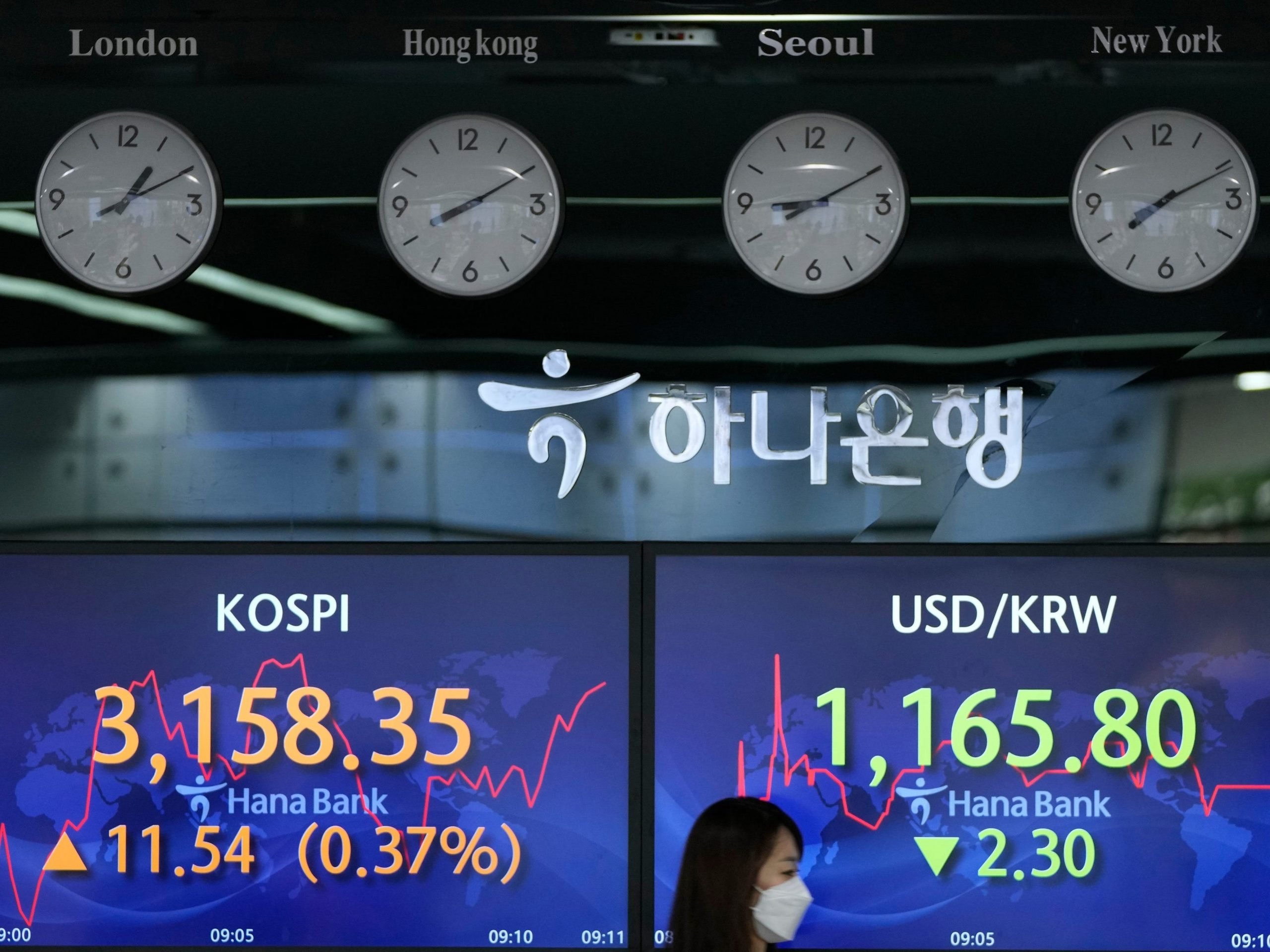
Lee Jin-man/AP Photo
"Seeing loan sharks demanding organs if people don't have cash to pay for their loans is an exaggeration. But the current situation where heavily indebted young people find themselves relying on credit to make purchases beyond their means is a very real problem," Son said.
Son added that it is not uncommon for millennials who are rejected by banks to seek out smaller financial institutions and loan sharks who may charge astronomical interest rates.
He noted as well that the trend of "borrowing to invest," known in South Korea as "bittoo," might be part of the problem, with millennials taking on loans to buy into new investing fads like cryptocurrency, lured with the promise of high returns on their investments.
"They are fully aware of the risks, but do it anyway," Son said. "They see their friends succeeding on a lucky investment and think they can do it too, but it doesn't always work out."
Son added that for many young South Koreans, credit cards and quick loans are seen as "the easiest way to survive."
"One may think it's convenient to get to pay in advance and split up the cost over the next two to three years while hoping to land a nice job to repay all the debt at one go," Son said.
Son added that easy credit and pay-later plans allowed millennials to splash out on luxury items.
It's common for young South Koreans to splurge on branded goods to the point of going into debt, a trend that became even more pronounced with "revenge spending" during the pandemic, Korea's JoongAng Daily newspaper reported.
"This is how debt piles up for South Korea's youths, and it's compounded by the cost of living in cities, student debt, and at times, financial irresponsibility," Son said.
"It is good that 'Squid Game' is getting so much attention," he added. "Perhaps people will learn something from it and realize that those characters could very well be them."
Many Korean millennials live in micro-apartments that are only 150 sq. ft.
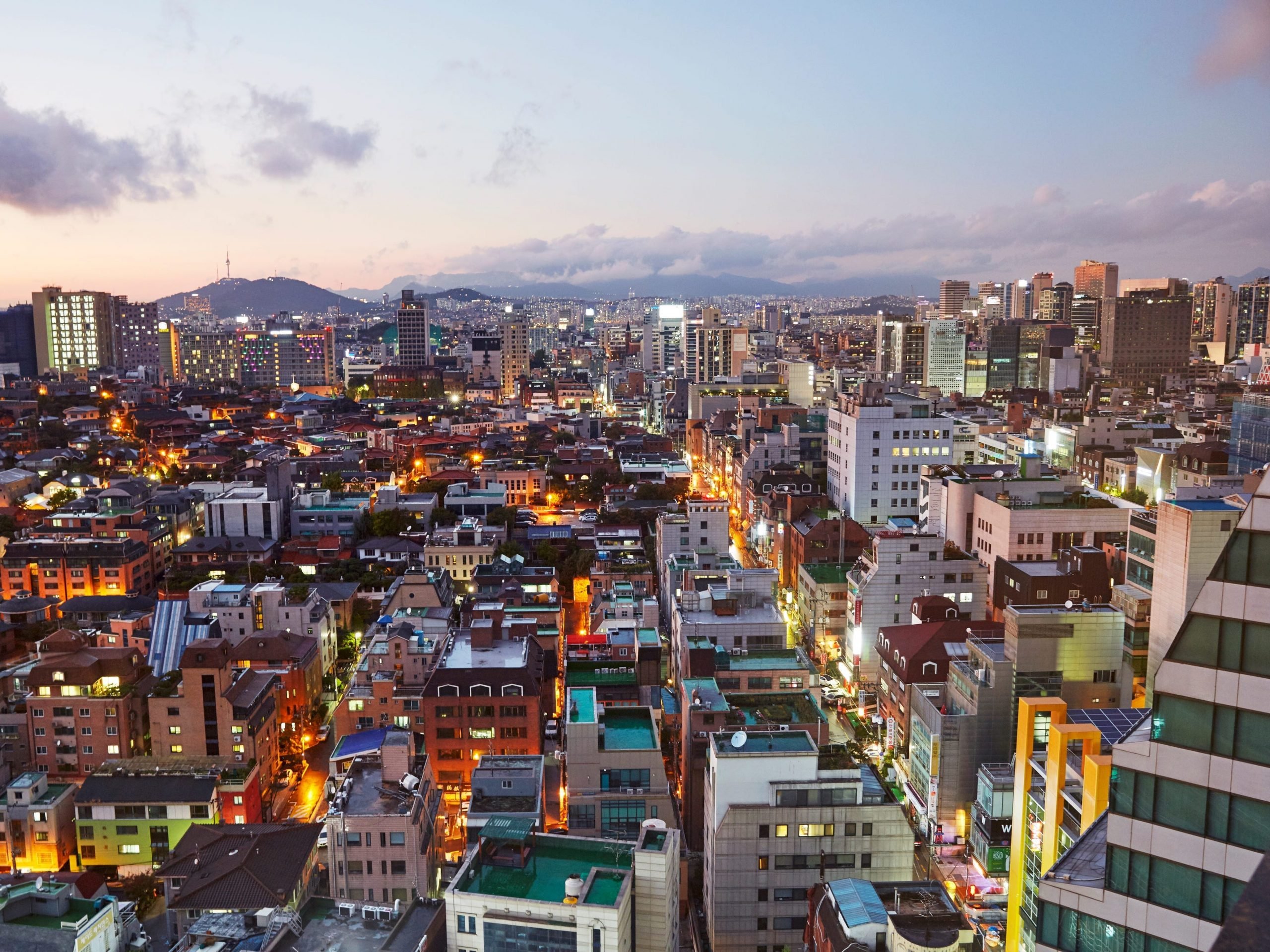
Allan Baxter / Getty Images
Many Korean millennials live in goshiwons - one-room, dormitory-style quarters containing just a bed and a table. These bare-bones accommodations were initially built in college towns for university students cramming for their examinations to live in for just a month or two, but have since turned into the only housing option many millennials can afford.
Hwang Tae-ho, 28, an aspiring musician who used to bartend at a club in the Hongik University area, lives in a goshiwon that he estimates is around three square meters (about 32 sq. ft.) in size. Hwang cannot afford a conventional housing unit because he doesn't have enough savings to pay the "wolse" - the Korean term for the down-payment needed to secure a rental agreement. This is a rental system unique to South Korea, where tenants give their landlords around one year's worth of rent upfront, then make small monthly payments for the rest of their stay.
"I deliver parcels and work two days a week at a cafe, and it's barely enough to pay for my rent and food," Hwang told Insider. "I find it amusing when foreigners think of the dirty living spaces you see in 'Parasite' and 'Squid Game' as unique or react to it like they've discovered a new world. Lots of people like me live in places like this."
Hwang is right. Around a fifth of single-person households in Seoul live in spaces under 14 square meters (or 150 sq. ft.). The Seoul Institute, the capital's official think tank, also estimated that a third of single-person households live in banjiha (or partially-underground) basement apartments (seen in "Parasite") or goshiwon-style boarding buildings.
Hwang told Insider that he, too, is deep in debt, having racked up around $8,000 in unpaid credit card bills that he has difficulty paying the minimum sum for every month.
"No one would want to live in a goshiwon by choice, but I can't afford a better option," he added.
South Korea's debt-laden millennials say runaway housing prices means starter homes are a pipe dream
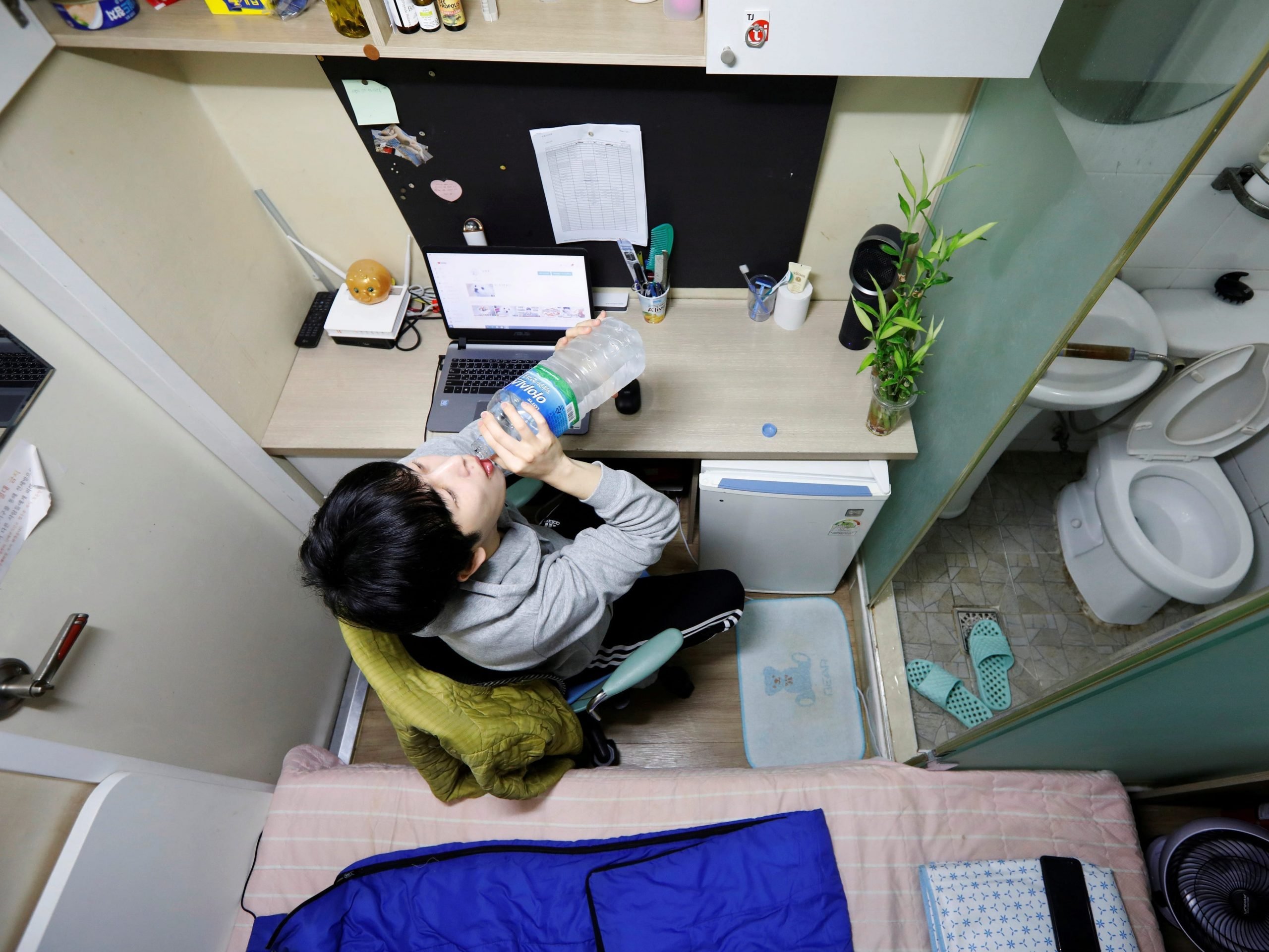
Kim Hong-Ji/Reuters
But even for some South Korean millennials who are in a slightly better financial position, Seoul's steep and ever-climbing real-estate prices make homeownership unlikely.
The average cost of a home in Seoul, South Korea, rose by 22% year over year in 2020, the largest price increase of any major city in Asia.
For Seoulites, it now costs a cool $1 million to buy an average starter home. Astronomical price increases have prompted some young South Koreans to hold off on registering their marriages in the hope that applying as a single-income household might help them skip the line and get earlier access to affordable housing schemes.
Kwak Hye-in, 31, told Insider that she spent the better part of her twenties paying off her credit card bills. But now that her slate is clean, buying a home with her fiancé, who co-owns a restaurant in southern Seoul, would mean taking on hundreds of thousands of dollars in debt again.
Kwak, who works as a hairstylist on weekdays and sells handbags at a clothing store in Myeongdong on the weekends, says that they make enough to qualify for a housing loan, but would barely be able to scrape together enough cash to renovate a two-room apartment. In the meantime, the couple is living crammed in a one-room loft called an officetel - an office building unit converted into a studio apartment, which costs them $800 a month to rent.
"Especially during the COVID-19 pandemic, we need some savings in case his restaurant requires emergency funds," Kwak said. "Also, it is unlikely that we would be able to afford a decent home in central Seoul. At least, with renting, we can live around 30 minutes from his restaurant and 45 minutes from my workplace."
Yong Kwon, a finance and markets expert at the Korea Economic Institute of America, told Insider that the current housing crisis has its roots in the South Korean government's removal of regulations on mortgage borrowing and other checks back in 2014.
The lack of supply has increased the home price in Seoul by almost 93% since 2017, which makes it very difficult for young Koreans to buy a starter home.Kang Jun-Koo, finance professor at Nanyang Business School
"The intention was to increase people's purchasing power which policymakers hoped would not only move homeowners who bought their property at the peak of the market in the mid-2000s to sell, but also incentivize property developers to build more housing units," Kwon said. "In effect, the current boom in the housing market is the end result of the previous government's intentional effort to raise home prices."
The consequence, Kwon noted, is that young people are struggling to buy starter homes, with the crisis being particularly severe in metropolitan Seoul.
Kang Jun-Koo, a finance professor at the Nanyang Business School in Singapore's Nanyang Technological University (NTU), told Insider that the housing crisis was so pronounced because millennial home buyers in South Korea have, historically, heavily relied on borrowing to purchase their homes.
The typical interest rate for home loans in South Korea stands at around 2.5%. However, "as the interest rate increases in the future, they are likely to face huge debt repayment burden," Kang noted.
Kang said the relative dearth of apartments in city areas also contributed to millennials' housing struggles.
"The lack of supply has increased the home (apartment) price in Seoul by almost 93% since 2017, which makes it very difficult for young Koreans to buy a starter home," Kang said.
He added that one way to combat this would be to either supply high-quality apartments in the Seoul metropolitan area or make more apartments available for rent at a reasonable price. He noted, however, that serious debt and significant income equality would likely continue to plague Korean millennials' chances at getting on the property ladder.
"The central bank has increased its benchmark interest rate for almost three years to help curb the country's household debt problems and a rise in home prices," Kang said. "The increase in interest rate from 0.5% to 0.75% in August already imposes a heavy interest payment burden on the average South Korean, and this will intensify as the central bank increases the interest rates."
Unemployment among Korean twentysomethings is nearing 50%
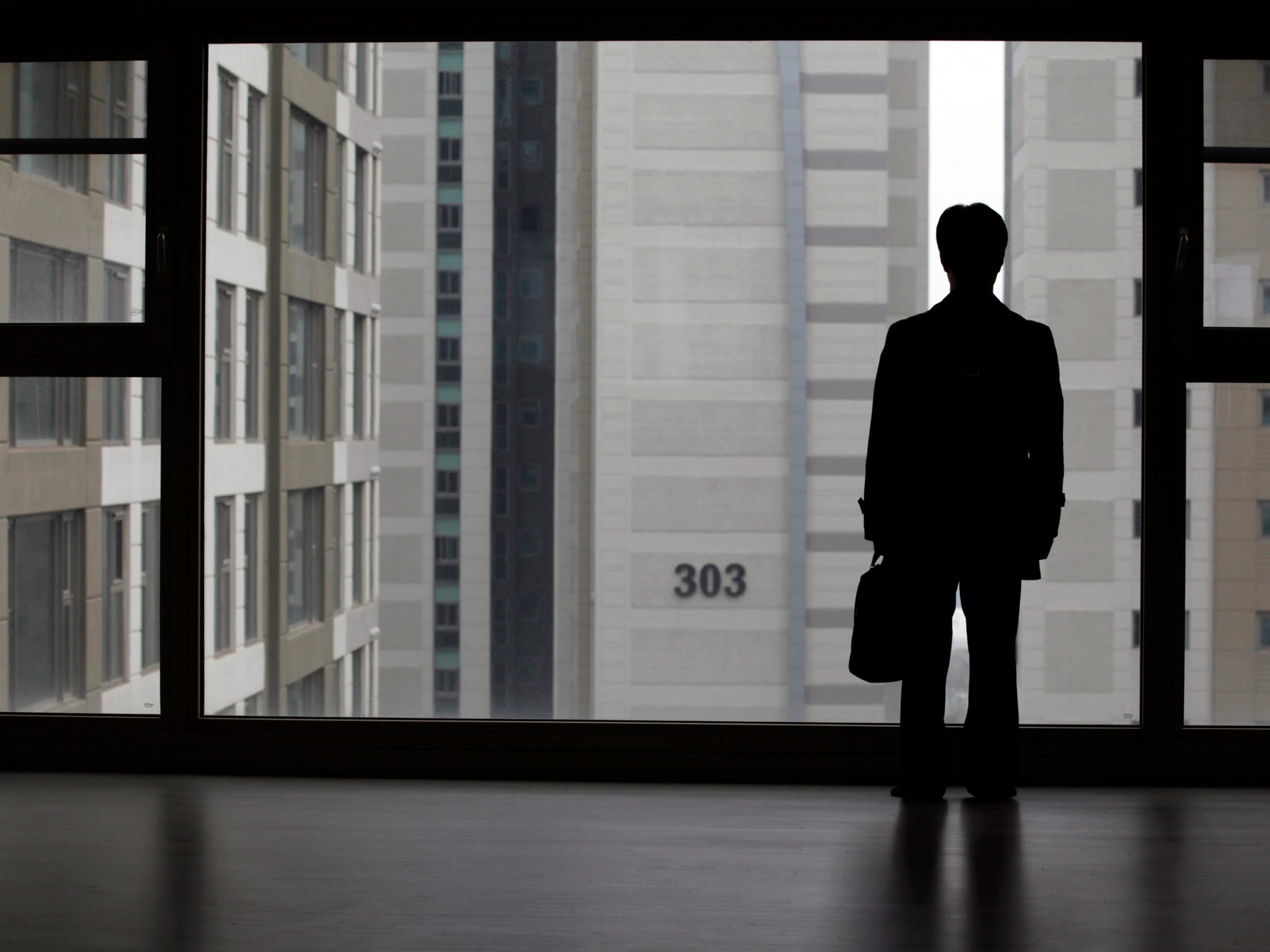
Lee Jae-Won/Reuters
Sarah Son, a lecturer in Korean studies at the University of Sheffield's School of East Asian Studies, told Insider that the debt crisis and squalor seen in South Korean cultural exports like "Squid Game" paints only part of the picture.
"Some of what we saw in 'Squid Game' and 'Parasite' resembles real life for many living on the edge or in the depths of debt, and the impact this has on relationships and one's position in society. But like any fictional depiction, it is only showing part of a larger story," Son said.
She noted that job insecurity, for one, was a pain point for Seoul's millennials.
A 2017 report from KDI Focus found that unemployment rose at an unprecedented rate among South Korea's young workforce.
"Korea's youth unemployment rate has rapidly ascended since 2013 while total unemployment remains little changed," their research found. "The youth unemployment rate of high school graduates has been maintained at a stable level thanks to the growing number of service jobs. However, a rapidly rising number of college graduates are unemployed due to the slow creation of professional and semi-professional jobs."
As South Korea's young people continue to pursue education, the job market has failed to catch up.
In July, the Korea Herald reported, only 58.6% of people in their 20s and 75.3% of people in their 30s were employed.
And more and more employers are pushing forward temporary rather than permanent contracts because they're cheaper for businesses, Son explained.
"However, it leaves employees feeling insecure and improperly compensated, and has been a large part of this 'Hell Joseon' conversation where young people claim they feel so much pressure on all sides," she continued. "It makes chasing the 'Korean dream' of a good university, and a stable, reputable job seem impossible."
"I can see why a lot of baby boomers call millennials the give-up generation. It's because we have no time to do anything other than work," management consultant Jung Seung-ho, 34, told Insider. He referred to the colloquial term "n-po se-dae," often used to describe those in their 20s and 30s who have abandoned numerous essential pillars of adult life - dating, marriage, starting families, owning a home, and having a solid career.
"It's hard to not give up and lose hope about fulfilling at least one of those things," Jung continued. "I was fortunate enough to have gone to Korea University, but I still have a housing loan and three credit card bills to pay for every month."
But it's not all doom and gloom for some who still see beauty and hope in the drudgery of their debt-filled lives.
Hwang, the musician, hasn't stopped chasing his dreams. In his goshiwon room in Hongdae, he still writes and records snippets of pop songs on an electric keyboard he keeps stowed away under his makeshift desk. He wants to buy a new keyboard and microphone once he's paid off his credit card debt. He hopes that people will hear his songs on the radio someday.
"I think Seoul is a city filled with a lot of opportunities, even without being born rich or going to a [prestigious] university," Hwang told Insider. "Life might be like a 'Squid Game' with very few winners and lots of losers, but who's to say I can't be one of the lucky ones?"
